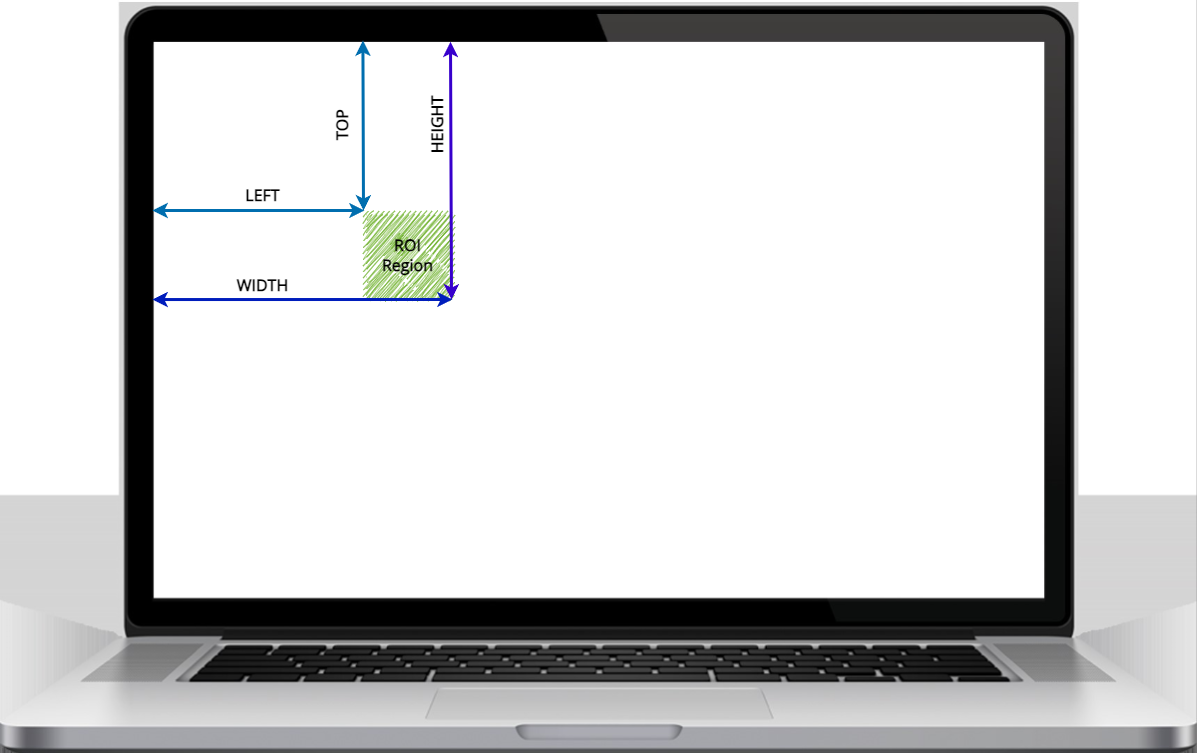ScreenGear API Parameters¶
monitor¶
This parameter enforces dxcam (if installed) and mss (otherwise) usage, and it is suitable for selecting index of a specific screen/monitor device (from where you want retrieve frames) in multi-monitor setup. For example, its value can be assign to 2, to fetch frames from a secondary monitor screen.
Implication of using monitor parameter
Any value on monitor parameter other than None in ScreenGear API:
- Will enforce
dxcamlibrary backend on Windows platform (if installed), andmsslibrary backend otherwise. - Will discard any value on its
backendparameter.
Data-Type: Integer, Tuple (only if dxcam backend on Windows)
Default Value: Its default value is None (i.e. disabled by default).
Usage:
Using GPU acceleration on Windows
With dxcam library backend, you can also assign which GPU devices ids to use along with monitor device ids as tuple (monitor_idx, gpu_idx), as follows:
# open video stream with defined parameters with
# monitor at index `1` and GPU at index `0`.
stream = ScreenGear(monitor=(1,0), logging=True).start()
Getting a complete list of monitor devices and GPUs
To get a complete list of monitor devices and outputs(GPUs), you can use dxcam library itself:
With mss library backend, You can also assign monitor value to -1 to fetch frames from all connected multiple monitor screens with mss backend.
With mss library backend, API will output BGRA colorspace frames instead of default BGR.
backend¶
This parameter enables pyscreenshot usage and select suitable backend for extracting frames in ScreenGear. The user have the authority of selecting suitable backend which generates best performance as well as the most compatible with their machines. The possible values are: dxcam (Windows only), pil, mss, scrot, maim, imagemagick, pyqt5, pyqt, pyside2, pyside, wx, pygdk3, mac_screencapture, mac_quartz, gnome_dbus, gnome-screenshot, kwin_dbus.
Remember to install backend library and all of its dependencies you're planning to use with ScreenGear API.
Any value on monitor parameter will disable the backend parameter. You cannot use both parameters at same time.
Backend defaults to dxcam library on Windows (if installed), and pyscreenshot otherwise.
Data-Type: String
Default Value: Its default value is "" (i.e. default backend).
Usage:
colorspace¶
This parameter selects the colorspace of the source stream.
Data-Type: String
Default Value: Its default value is None.
Usage:
All supported colorspace values are given here ➶.
Its complete usage example is given here ➶
options¶
This parameter provides the flexibility to manually set the dimensions of capture screen area.
Supported Dimensional Attributes
ScreenGear API takes left, top, width, height coordinates of the bounding box of capture screen area(ROI), similar to PIL.ImageGrab.grab, defined below:
left: the x-coordinate of the upper-left corner of the regiontop: the y-coordinate of the upper-left corner of the regionwidth: the width of the complete region from left to the bottom-right corner of the region.height: the height of the complete region from top to the bottom-right corner of the region.
Data-Type: Dictionary
Default Value: Its default value is {}
Usage:
The desired dimensional coordinates parameters can be passed to ScreenGear API by formatting them as attributes, as follows:
# formatting dimensional parameters as dictionary attributes
options = {'top': 40, 'left': 0, 'width': 100, 'height': 100}
# assigning it
ScreenGear(**options)
logging¶
This parameter enables logging (if True), essential for debugging.
Data-Type: Boolean
Default Value: Its default value is False.
Usage:
